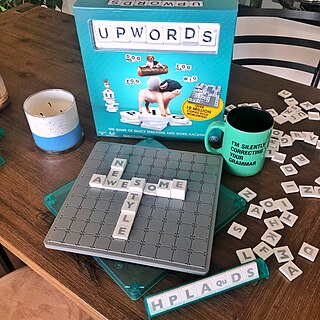
Upwords is a board game. It was originally manufactured and marketed by the Milton Bradley Company, now a division of Hasbro. It has been marketed under its own name and also as Scrabble Upwords in the United States and Canada, and Topwords, Crucimaster, Betutorony, Palabras Arriba and Stapelwoord in other countries. It is currently available as a board game and a digital gaming app.
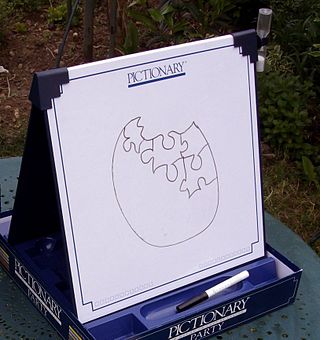
Pictionary is a charades-inspired word-guessing game invented by Robert Angel with graphic design by Gary Everson and first published in 1985 by Angel Games Inc. Angel Games licensed Pictionary to Western Publishing. Hasbro purchased the rights in 1994 after acquiring the games business of Western Publishing. Mattel acquired ownership of Pictionary in 2001. The game is played in teams with players trying to identify specific words from their teammates.

Boggle is a word game in which players try to find as many words as they can from a grid of lettered dice, within a set time limit. It was invented by Allan Turoff and originally distributed by Parker Brothers. The game is played using a plastic grid of lettered dice, in which players look for words in sequences of adjacent letters.
Sid Sackson was an American board game designer and collector, best known as the creator of the business game Acquire.

Civilization is a board game designed by Francis Tresham, published in the United Kingdom in 1980 by Hartland Trefoil and in the United States in 1981 by Avalon Hill. The Civilization brand is now owned by Hasbro. It was out of print for many years, before it saw republication in 2018, by Gibsons Games. The game typically takes eight or more hours to play and is for two to seven players.

Kensington is an abstract strategy board game devised by Brian Taylor and Peter Forbes in 1979, named after London's Kensington Gardens, which contains the mosaic upon which the gameboard is patterned. It is played on a geometrical board based on the rhombitrihexagonal tiling pattern. The objective of the game is to capture a hexagon by occupying the six surrounding vertices. The game maintains an elegant simplicity while still allowing for astonishingly complex strategy. The placing and movement of tokens have been compared to nine men's morris.
Rail Baron is a railroad board game for 3 to 6 players.

TwixT is a two-player strategy board game, an early entrant in the 1960s 3M bookshelf game series. It became one of the most popular and enduring games in the series. It is a connection game where players alternate turns placing pegs and links on a pegboard in an attempt to link their opposite sides. While TwixT itself is simple, the game also requires strategy, so young children can play it, but it also appeals to adults. The game has been discontinued except in Germany and Japan.

Focus is an abstract strategy board game, designed by Sid Sackson and first published in 1964 by Kosmos. The game has been re-published many times since, sometimes under the titles Domination or Dominio. Focus won the 1981 Spiel des Jahres and Essen Feather awards. The game appears in Sackson's A Gamut of Games in the section New Battles on an Old Battlefield.
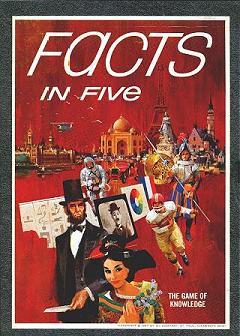
Facts in Five: The Game of Knowledge is a trivia game for two or more players, designed in 1964 by Rick Onanian.
I'm the Boss! is a board game by American designer Sid Sackson. It is a negotiation game in which a group of players compete and cooperate to put together profitable business deals. The goal is to make the most money. I'm the Boss is currently published by Gryphon Games, after the Face2Face Games edition. It was previously published as Kohle, Kies & Knete.

Isolation is an abstract board game published by Ravensburger in 1972 in Germany as Isola, and then published internationally by licensed game companies under the titles Stranded and Isolation.
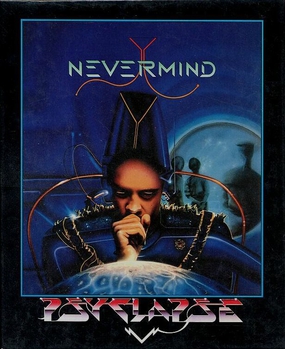
Never Mind is a puzzle video game developed by MC Lothlorien and published by Psygnosis under its Psyclapse label in 1989.
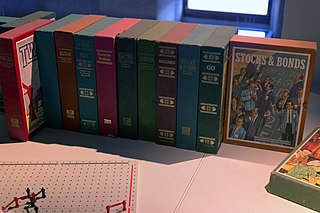
The 3M bookshelf game series is a set of strategy and economic games published in the 1960s and early 1970s by 3M Corporation. The games were packaged in leatherette-look large hardback book size boxes in contrast to the prevalent wide, flat game boxes. The series grew to encompass over three dozen games. Most were multi-player board games or card games; a few were trivia games or two-handed board games. Acquire and TwixT were among the best-selling titles. The series later became part of the Avalon Hill Bookcase games. Very few of these games are still being published.

The Game of Life, also known simply as Life, is a board game originally created in 1860 by Milton Bradley as The Checkered Game for Life, the first ever board game for his own company, the Milton Bradley Company. The Game of Life was US's first popular parlour game. The game simulates a person's travels through their life, from early adulthood to retirement, with college if necessary, jobs, marriage, and possible children along the way. Up to six players, depending on the version, can participate in a single game. Variations of the game accommodate up to ten players.

Speed Circuit is a Formula I racing game published by 3M in 1971, and then republished by Avalon Hill in 1977.
Sleuth is a strategy deduction card game designed by Sid Sackson and published by 3M in 1971. It is a reimplementation of the 1967 game The Case of the Elusive Assassin without the game board. The object of the game is to deduce the identity of a missing gem by questioning other players and gathering evidence, similar to Cluedo.

Wizard's Quest is a fantasy board wargame published by Avalon Hill in 1979.

Luftwaffe, subtitled "The Game of Aerial Combat Over Germany 1943-45", is a board wargame originally published by Poultron Press in 1969 under a different title, then subsequently sold to Avalon Hill, who republished it in 1971. The game is an operational simulation of the American bombing campaign against Germany during World War II.
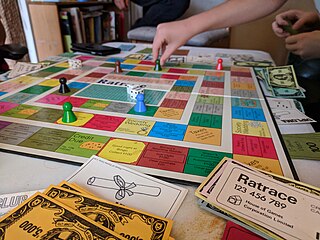
Ratrace is a family economic board game designed by Alfons Rubbens and published by Waddingtons in 1967. Described as "the madcap game of social climbing," players attempt to acquire status and cash in order to make their way from Working Class to High Society and become the wealthiest player by the end of the game.


















